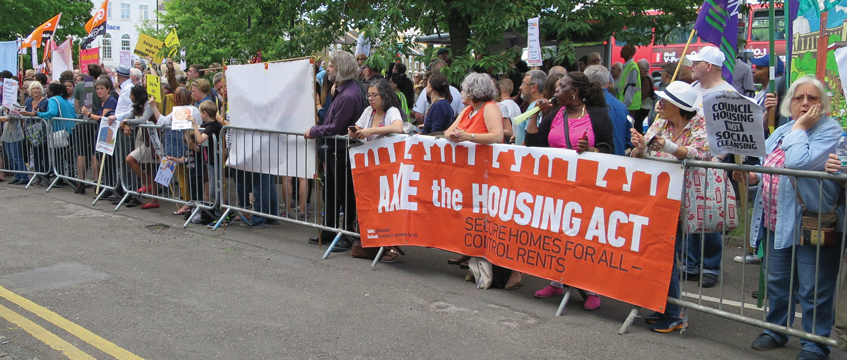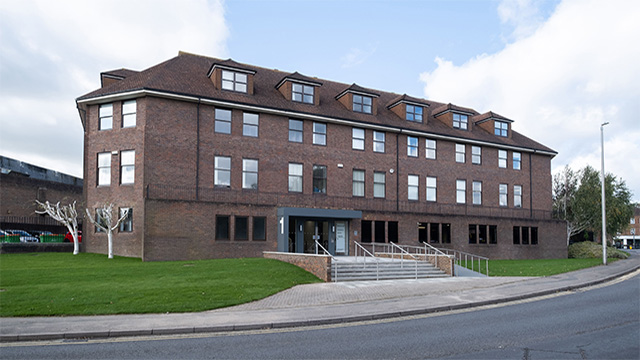Strickland: “No one will be worse off as a result of regeneration”
Alan Strickland has been a Labour councillor for Haringey since 2010. As cabinet member for regeneration, housing and planning, he has been at the forefront of negotiating the controversial £2bn housing development vehicle with Lendlease and securing London’s biggest housing zone deal from the mayor.
Last week, he announced he will stand down from the role at May’s local elections after failing to win a majority in the first round of the selection process for his ward, citing the rise of “narrow factionalism” within his local Labour group. With the future of the HDV now at risk with further supportive councillors likely to be de-selected, Strickland makes his final case for why the joint venture should go ahead.
Alan Strickland has been a Labour councillor for Haringey since 2010. As cabinet member for regeneration, housing and planning, he has been at the forefront of negotiating the controversial £2bn housing development vehicle with Lendlease and securing London’s biggest housing zone deal from the mayor.
Last week, he announced he will stand down from the role at May’s local elections after failing to win a majority in the first round of the selection process for his ward, citing the rise of “narrow factionalism” within his local Labour group. With the future of the HDV now at risk with further supportive councillors likely to be de-selected, Strickland makes his final case for why the joint venture should go ahead.
COMMENT: Our waiting list is 10,000 long, and more than 3,000 local families live in temporary accommodation. The reality for many in social housing is bleak; 30% of children on Tottenham’s housing estates live in poverty in properties unfit for modern life, with little to no hope of ever having a decent secure home in the area they grew up in. Unemployment is unacceptably high and neighbourhoods are too often blighted by crime and anti-social behaviour that is able to thrive in the dark corners and inaccessible areas of poorly designed estates.
We won’t stand for this.
Challenges of this complexity demand radical solutions on a significant scale. Local authorities have limited options. They can borrow to build, but government constraints on borrowing prevent this delivering the volume needed. They can sell land for capital receipt, but this means sacrificing a future stake in the development and risks local people being pushed out. They can set up their own development company, but this means shouldering risk that could jeopardise their financial security – and it doesn’t remove the need to work with private construction firms.
In Haringey, we’re determined to go further for our residents than these narrow options allow. I didn’t come into politics to shout from the sidelines while the residents I was elected to represent struggle with very real issues of unemployment and substandard housing or homelessness. Local people have made it clear to me, time and again, that they want to see more and better homes and more and better jobs. It shouldn’t be too much to ask, and it is my responsibility to leave no stone unturned in helping make it happen.
But the council can’t do it alone. I’ve been proud to lay the foundations of the Haringey Development Vehicle. This innovative approach to regeneration will see Haringey work side-by-side with developers Lendlease in a 50:50 partnership that unites council-owned land with developer expertise and funding to unlock the potential for more than 6,400 new homes and thousands more jobs in Haringey.
And it doesn’t stop there. The HDV will bring community facilities including a new school, health centre and library, as well as a minimum of £28million investment in socio-economic improvements to offer local people access to skills and training opportunities and health and wellbeing programmes. As an equal partner, the council retains control over key decisions, and takes a share of development profits, allowing them to be ploughed into further improvements to the borough. This gives the authority control that it could never have by simply exercising its statutory planning powers.
Wherever you find regeneration plans, you will find controversy and opposition. I respect people’s differing opinions, and I recognise that it is our responsibility to address the legitimate anxieties people have about their homes. That is why we have enshrined tenants’ rights in council policy, making a commitment that all existing tenants will have a right to return on equivalent terms and that no one living in Haringey will be worse off as a result of regeneration. These cast iron commitments are embedded in the legal agreements of the HDV. They are non-negotiable.
Despite all this, there are some who remain steadfast in their opposition. Some who wrongly claim these plans mean wholesale privatisation of public assets. Some whose abhorrent accusations of “social cleansing” serve only to stoke unwarranted fears and divide communities. Some whose ideological opposition would see a once-in-a-generation opportunity for lasting change lost forever.
The challenge being made in Haringey not only seeks to threaten the future of the borough, it threatens London’s opportunity to fulfil its potential as one of the world’s great cities. Despite the pressing need for more homes, delivery consistently falls far short of what is needed. Targets for housebuilding in London have been raised by every government and mayor since 2000, with the new London Plan calling for 66,000 new homes per year. Yet in that period, delivery has remained stuck at an average of around 26,000.
Although 2016/17 saw a one-off peak of 39,000 new homes in the capital, it’s too early to say whether or not there are enough new home building starts in the pipeline to sustain this.
There is also a need to ensure as many new homes as possible are genuinely affordable. As the mayor points out, 80% of new homes being built are affordable to just 8% of the population while, across the capital, 54,000 households – including more than 87,000 children – are living in temporary accommodation.
If we are to stand any chance of delivering the homes and opportunities that our capital’s residents need and deserve, developers must feel confident to invest alongside local authorities. The partnership model of the HDV should serve as a blueprint for the long-term commitments developers need, hand-in-hand with the safeguards and opportunities that residents demand.
I remain driven by my commitment to inclusivity and by a desire to improve the lives of our residents and meet the very real needs of those waiting for housing and jobs now, and of future generations. The council’s cabinet has already confirmed the HDV and my focus for the next six months will remain on building on its foundations and securing the long-term partnership that will deliver on behalf of Haringey’s residents for generations to come.











